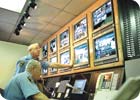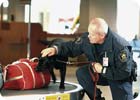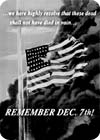All Eyes on Access


When people visit Halifax International Airport, they need not be alarmed if they’re being watched with greater interest than usual. It’s nothing personal.
Halifax International Airport Authority (HIAA) recently launched iWatch -- a new program designed to increase awareness of security threats and encourage the airport community to report suspicious activity. It’s the first and most comprehensive airport security awareness program of its kind in Canada. And it’s part of HIAA’s ongoing efforts to stay ahead of the security curve.
Airport security has always been a top-of-mind challenge for Halifax International Airport and other airports. According to the Canadian Air Transport Security Authority (CATSA), over 738,000 prohibited items were intercepted at pre-board screening checkpoints in Canada’s major airports in 2005. And of those, there were 2,147 critical incidents, such as discovery of a prohibited weapon or explosive, during the same period.
Still broader airport security threats pose a different challenge, since terrorist or criminal acts can take place anywhere in the airport vicinity -- from the perimeter fence to the parking lot.

More access control eyes needed
“Airports are more than just terminals and runways. They’re busy commercial neighborhoods; and that means we must be vigilant everywhere there’s a possible threat,” said Eleanor Humphries, HIAA president and CEO. “We believe a community-focused program like iWatch can help make airport security more far-reaching and effective. When you have security agencies working together with businesses and individuals in the area, you create a powerful network of allies.”
This network is vital to helping on-site police and security agencies keep a look-out for suspicious activity. It’s this inclusive approach that gives iWatch its distinct community flavor. In fact, HIAA consulted a diverse range of individuals and businesses in the community while developing the campaign -- from baggage handlers to pilots to ground-service workers. One message came through loud and clear: We’re all concerned about airport security; how can we get involved?
iWatch harnesses the commitment of airport workers and provides them tools to recognize and report suspicious behavior. Posters, brochures and other information are widely distributed throughout the airport community. The material provides clear guidelines on types of suspicious behavior to report. Community members are encouraged to “watch out -- call in” to a central security phone number. Newsletters and updated bulletins also help keep access controls uppermost in people’s minds.
“We all have a vested interest in airport security,” said Peter Clarke, HIAA vice president, operations. “The ultimate goal of iWatch is to create a security culture that reaches deep into the airport community and helps employees identify suspicious activity that may set off alarm bells, thus reducing security infractions and potential breaches.”
Potential terrorist or criminal acts are always on the radar of airport police and security agencies. But airport security incidents -- such as unattended baggage or unauthorized people entering secure areas -- can also have serious ripple effects. So, with a workforce of close to 5,500 people, or nearly 11,000 eyes, the Halifax International Airport community is now ready, willing and better able to keep a closer watch on suspicious activity. V

SIDEBAR: Poster Campaigns Have Effective History
If you’ve lived through World War II or are a frequent viewer of programs on the History Channel, you know that posters were effective means of encouraging citizens and factory workers to take up their role in the war effort. Remember Pearl Harbor was an ongoing theme. During the Cold War, military and military contractor company walls were covered with posters alerting employees to keep their eyes open for potential intruders. More recently, retail security operations use posters and often a telephone number to an outsourced firm to encourage sales associates to report colleagues stealing from the store. A new twist: Some corporations show employees a “poster-like” splash page warning as their desktop computer starts up.
Looking for a reprint of this article?
From high-res PDFs to custom plaques, order your copy today!





